Here we will guide you how to cook frozen lobster tails the step-by-step process of cooking delicious frozen lobster tails. Whether you’re a seasoned chef or a beginner in the kitchen, you’ll learn the best methods for preparing tender and flavorful lobster every time. From thawing techniques to cooking methods and serving suggestions, this article covers everything you need to know to elevate your frozen lobster tail experience.
How to Prepare Frozen Lobster Tails Key Takeaways
- Frozen lobster tails offer convenience and availability year-round.
- Proper thawing and preparation techniques are crucial for tender, flavorful results.
- Boiling, baking, and grilling are effective cooking methods for frozen lobster tails.
- Pairing cooked lobster tails with classic accompaniments and creative garnishes can enhance the dining experience.
- Storing and reheating leftover cooked frozen lobster tails correctly preserves their quality and flavor.
Why Choose Frozen Lobster Tails
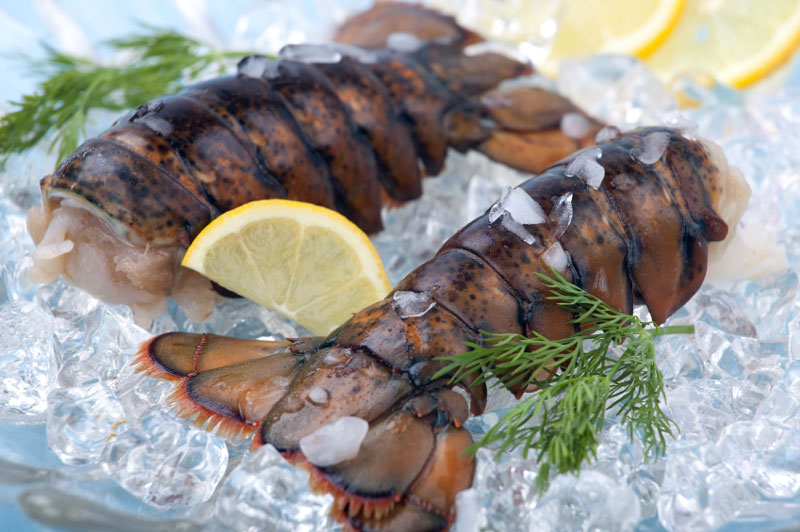
When it comes to enjoying the luxurious flavor of lobster, frozen lobster tails offer a range of advantages that make them a preferred choice for many home cooks. From their convenience and year-round availability to their cost-effective nature, frozen lobster tails are a versatile and practical option for any culinary occasion.
Convenience and Availability
One of the primary benefits of choosing frozen lobster tails is their remarkable convenience and widespread availability. Unlike fresh lobster, which can be challenging to find and often limited by seasonal factors, frozen lobster tails can be easily sourced from your local grocery store or online retailer. This year-round accessibility ensures that you can indulge in the succulent flavors of lobster anytime, without the constraints of seasonal availability.
Cost-Effective Luxury
Frozen lobster tails are often more cost-effective than their fresh counterparts, allowing you to enjoy the luxurious taste of lobster without breaking the bank. By taking advantage of the freezing process, which preserves the quality and freshness of the lobster, you can savor the indulgent flavors of this delicacy at a fraction of the cost of fresh lobster. This makes frozen lobster tails an attractive option for those seeking to elevate their home-cooked meals without the hefty price tag.
Essential Tools and Ingredients
To ensure a successful frozen lobster tail cooking experience, you’ll need a few essential tools and ingredients. From sharp knives and kitchen shears to the perfect seasonings and accompaniments, this section covers the must-have items that will elevate your lobster dish.
Cooking Utensils
The key cooking utensils for frozen lobster tails include a sharp chef’s knife or kitchen shears for cutting and butterflying the tails, as well as a large pot or baking dish for boiling, baking, or grilling the lobster. Additionally, you may want to have a pair of kitchen tongs on hand for easily handling the cooked lobster tails.
Seasonings and Accompaniments
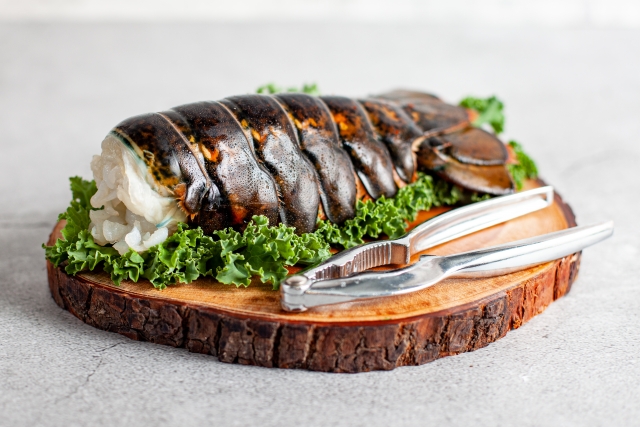
To enhance the natural sweetness and delicate flavor of your frozen lobster tails, consider using a variety of seasonings and accompaniments. Some popular options include lemon wedges, melted butter, garlic butter, fresh parsley, and a variety of spices like paprika, cayenne pepper, or Old Bay seasoning. These simple additions can transform your frozen lobster tails into a truly indulgent and flavorful meal.
| Essential Tools for Cooking Frozen Lobster Tails | Seasonings and Accompaniments for Frozen Lobster Tails |
|---|---|
| Sharp chef’s knife or kitchen shears Large pot or baking dish Kitchen tongs | Lemon wedges Melted butter Garlic butter Fresh parsley Paprika, cayenne pepper, Old Bay seasoning |
Thawing Frozen Lobster Tails
Properly thawing your frozen lobster tails is crucial for achieving the best texture and flavor. There are two reliable methods you can use to ensure your lobster tails are ready for cooking: the refrigerator thawing method and the quick thawing technique.
Refrigerator Thawing Method
The refrigerator thawing method is a slower but safer approach to thawing frozen lobster tails. This method allows the lobster tails to gradually transition from frozen to room temperature, preserving their delicate texture and flavor. To thaw your lobster tails using this method, simply place them in the refrigerator and allow them to thaw for 24-48 hours, depending on the size of the tails.
Quick Thawing Technique
If you’re short on time, the quick thawing technique for frozen lobster tails can be a convenient option. This method involves submerging the sealed lobster tails in cold water, changing the water every 30 minutes to maintain a low temperature. Depending on the size of the tails, this process can take 1-2 hours. Be sure to cook the lobster tails immediately after they have fully thawed.
By following these thawing methods, you’ll ensure your frozen lobster tails are ready for the best possible cooking experience, whether you choose to boil, bake, or grill them.
Preparation: Butterfly or Split
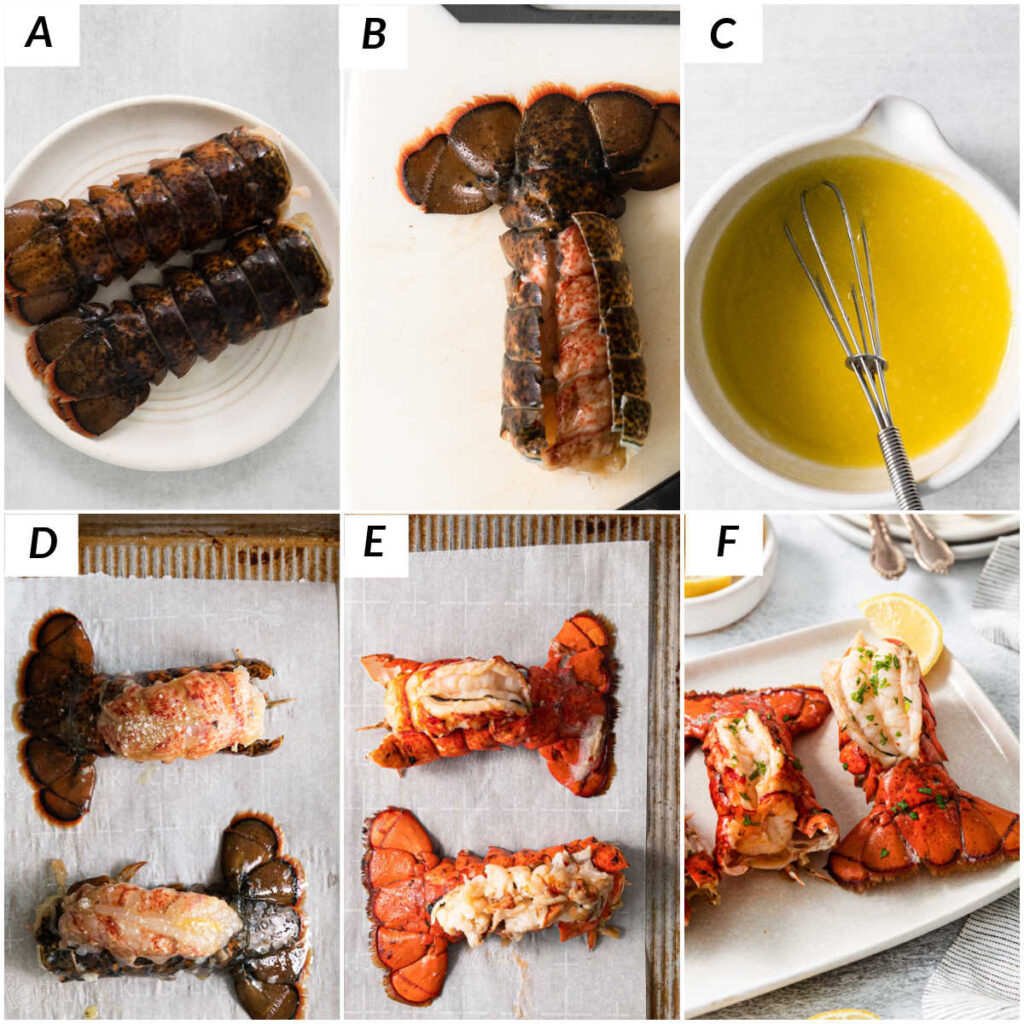
Before you can enjoy the delectable flavors of your frozen lobster tails, it’s essential to properly prepare them. The two most common methods are butterflying and splitting, each offering its own unique benefits. Let’s explore the step-by-step process for both techniques to ensure your frozen lobster tails cook evenly and present an appetizing appearance.
Butterflying Frozen Lobster Tails
Butterflying your frozen lobster tails is a simple yet effective way to prepare them for cooking. This method involves cutting the shell along the underside of the tail, carefully opening it up, and exposing the meat. Butterflying not only helps the lobster tails cook more quickly and evenly, but it also creates an elegant presentation that is sure to impress your guests.
Splitting Frozen Lobster Tails
Another popular preparation technique is to split frozen lobster tails down the center. This approach involves using a sharp knife or kitchen shears to carefully cut the shell and meat in half, lengthwise. Splitting the tails allows for even cooking, as well as creating a surface area that can be easily seasoned and garnished.
Regardless of whether you choose to butterfly or split your frozen lobster tails, proper preparation is key to achieving the best possible results. Take the time to carefully follow the instructions for each method, ensuring your lobster tails cook to perfection and showcase their natural beauty.
Cooking Methods: Boiling, Baking, and Grilling
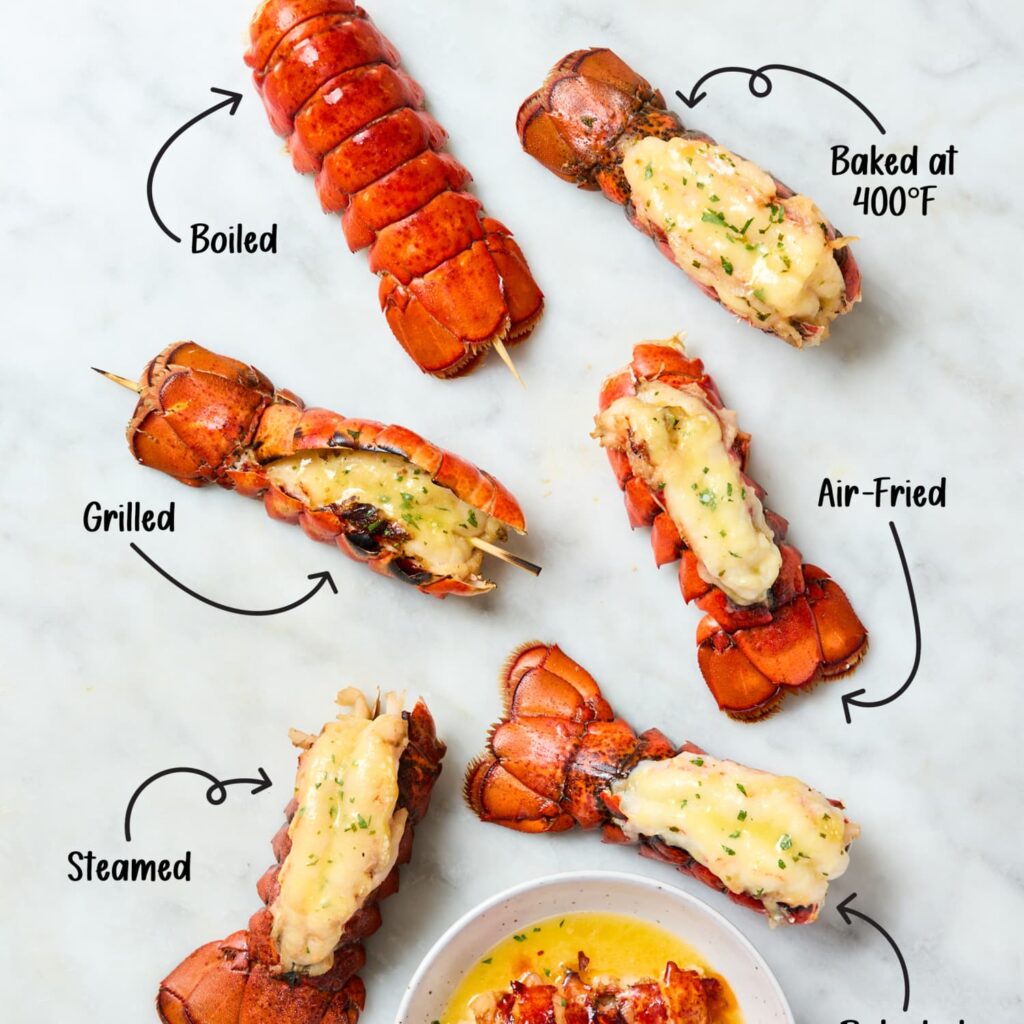
Frozen lobster tails can be prepared using a variety of cooking techniques, each offering unique benefits and flavors. Whether you prefer the tender, juicy results of boiling, the delightful aroma of baking, or the smoky twist of grilling, these methods will elevate your frozen lobster tail experience.
Boiling for Tender Lobster Tails
Boiling is a classic and reliable method for cooking frozen lobster tails. This technique ensures the lobster meat remains tender and juicy, with a delicate flavor. To boil your frozen lobster tails, start by filling a large pot with enough water or flavorful seafood stock to fully submerge the tails. Bring the liquid to a rapid boil, then gently lower the prepared lobster tails into the pot. Simmer for 8-10 minutes, or until the lobster meat is opaque and cooked through.
Baking for a Delightful Flavor
For a more indulgent and flavorful approach, baking frozen lobster tails is an excellent choice. Preheat your oven to 400°F (200°C) and arrange the prepared lobster tails on a baking sheet or in a shallow baking dish. Brush the tails with melted butter or olive oil, and season them with your favorite herbs and spices. Bake for 12-15 minutes, or until the meat is opaque and the edges are slightly browned, for a delightful combination of tenderness and flavor.
Grilling for a Smoky Twist
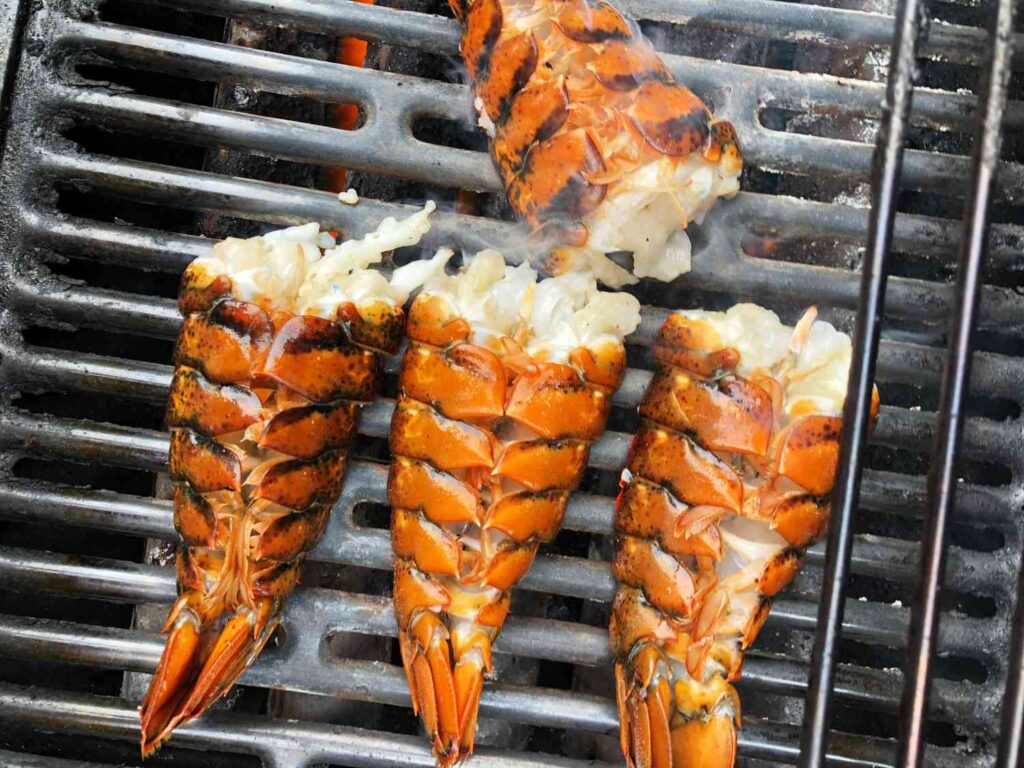
If you’re looking to add a smoky dimension to your frozen lobster tails, grilling is the way to go. Preheat your grill to medium-high heat and lightly oil the grates. Place the prepared lobster tails directly on the grill, and cook for 10-12 minutes, flipping them halfway through, until the meat is opaque and slightly charred. The high heat and smoky environment will impart a delectable flavor to your frozen lobster tails.
Regardless of the cooking method you choose, the key to perfectly cooked frozen lobster tails is to avoid overcooking. Be sure to follow the recommended cooking times and temperatures to ensure your lobster tails are tender, juicy, and bursting with flavor.
How to Cook Frozen Lobster Tails
Cooking delicious frozen lobster tails is easier than you might think. By following these step-by-step instructions and temperature guidelines, you’ll be able to prepare tender, flavorful lobster tails that will impress your family and guests.
Step-by-Step Instructions
Begin by properly thawing your frozen lobster tails using the refrigerator or quick thawing method, as outlined in the previous section. Once thawed, use a sharp knife or kitchen shears to butterfly or split the lobster tails, exposing the meat. Season the lobster tails with your desired herbs, spices, and butter or oil to enhance the flavor.
For boiling, bring a large pot of salted water to a rolling boil. Gently place the prepared lobster tails in the water and cook for 5-8 minutes, or until the meat is opaque and cooked through. Drain the lobster tails and serve immediately.
If baking, preheat your oven to 400°F (200°C). Arrange the prepared lobster tails on a baking sheet and bake for 12-15 minutes, or until the meat is tender and cooked to your desired doneness.
For grilling, preheat your grill to medium-high heat. Brush the lobster tails with oil or melted butter and place them on the grill, meat-side down. Grill for 8-10 minutes, flipping them halfway through, until the meat is cooked and slightly charred.
Cooking Time and Temperature
The recommended cooking time and temperature for frozen lobster tails will vary depending on the cooking method you choose. As a general guideline:
- Boiling: 5-8 minutes in a rolling boil
- Baking: 12-15 minutes at 400°F (200°C)
- Grilling: 8-10 minutes, flipping halfway, at medium-high heat
Always use a meat thermometer to ensure the lobster tails are cooked to an internal temperature of 145°F (63°C) or higher. This will ensure the lobster meat is tender, juicy, and safe to consume.
Serving Suggestions and Garnishes
Elevate your perfectly cooked frozen lobster tails by pairing them with delectable accompaniments and creative garnishes. Explore a range of classic side dishes and sauces that complement the rich, succulent flavor of the lobster, as well as innovative garnish ideas that add visual appeal and unique flavors to your dish.
Classic Accompaniments
When it comes to serving cooked frozen lobster tails, there are several tried-and-true accompaniments that allow the natural sweetness and tenderness of the lobster to shine. Consider pairing your lobster tails with flavorful sauces like drawn butter, lemon-garlic butter, or a classic hollandaise. Serve them alongside simple yet elegant side dishes such as roasted asparagus, creamy mashed potatoes, or a fresh garden salad to create a well-balanced and satisfying meal.
Creative Garnish Ideas
For an eye-catching presentation, elevate your cooked frozen lobster tails with a variety of creative garnish ideas. Sprinkle finely chopped fresh herbs like parsley, chives, or tarragon over the top to add a pop of color and a burst of flavor. Arrange thin slices of lemon, lime, or orange around the plate to complement the natural sweetness of the lobster. Consider adding a sprinkle of toasted breadcrumbs or crushed nuts for a delightful textural contrast.
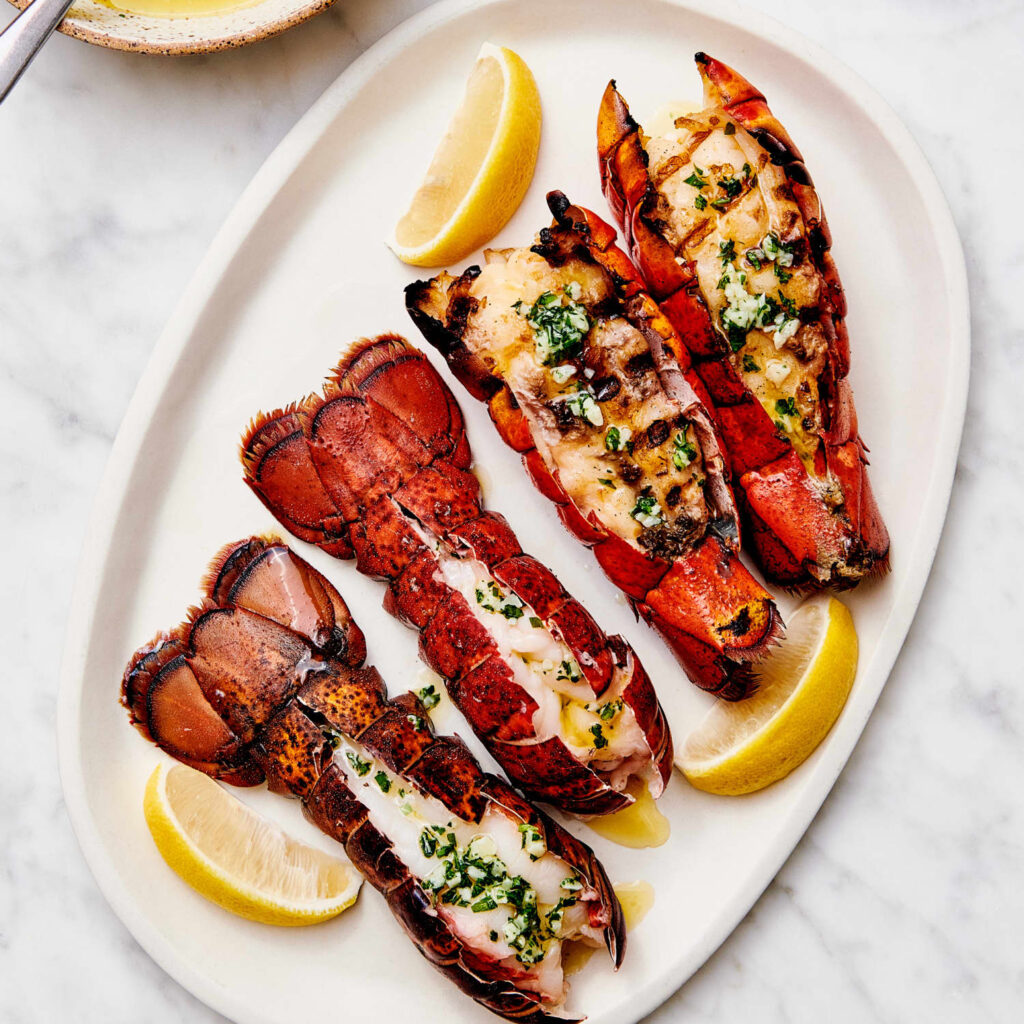
By incorporating these serving suggestions and garnishes, you can transform your cooked frozen lobster tails into a visually stunning and delicious culinary masterpiece that is sure to impress your guests.
Storage and Reheating Tips
Properly storing and reheating your cooked frozen lobster tails is crucial for maintaining their tender texture and delicious flavor. Whether you have leftovers or want to enjoy your cooked frozen lobster tails at a later time, follow these guidelines to ensure they remain fresh and ready to savor.
To store cooked frozen lobster tails, allow them to cool completely, then place them in an airtight container or resealable plastic bag. If storing in the refrigerator, they can last for up to 3 days. For longer-term storage, freeze the cooked frozen lobster tails for up to 2-3 months. When ready to enjoy, thaw the lobster tails in the refrigerator overnight before reheating.
When it’s time to reheat cooked frozen lobster tails, there are a few effective methods to choose from. The oven is a great option, as it gently warms the lobster tails without drying them out. Preheat your oven to 275°F (135°C), place the lobster tails in a baking dish, and heat them for 10-15 minutes, or until they’re heated through.
Another convenient way to reheat cooked frozen lobster tails is in the microwave. Place the lobster tails in a microwave-safe dish, cover with a damp paper towel, and heat in 30-second intervals, flipping and checking the temperature until they’re warm throughout. Be careful not to overcook, as this can make the lobster tough and rubbery.
No matter which reheating method you choose, be sure to keep a close eye on the cooked frozen lobster tails to avoid overcooking. Enjoy your perfectly reheated lobster tails with your favorite side dishes and garnishes for a delightful and satisfying meal.
Conclusion
In conclusion, cooking frozen lobster tails is a simple and rewarding task that can bring the luxury of lobster to your home kitchen. By following the techniques and tips outlined in this comprehensive guide, you’ll be able to prepare tender, flavorful, and visually appealing frozen lobster tails every time. Whether you choose to boil, bake, or grill your frozen lobster tails, the end result will be a delicious and impressive meal that’s sure to impress your family and guests.
The convenience and cost-effectiveness of frozen lobster tails make them an accessible option for home cooks, allowing you to enjoy the rich, succulent flavor of lobster without the high price tag. With the right tools, seasonings, and cooking methods, you can elevate your frozen lobster tails to new heights, creating a truly memorable dining experience.
So, the next time you have a craving for the delectable taste of lobster, don’t hesitate to reach for those frozen tails. With this guide as your trusted companion, you’ll be able to cook frozen lobster tails to perfection, satisfying your seafood cravings and impressing your loved ones in the process. Bon appétit!
Learn More Recipe: How to Cook Lobster Tail
FAQ
How long do I need to thaw frozen lobster tails?
The thawing time for frozen lobster tails can vary depending on the method you choose. For the refrigerator thawing method, plan for 12-24 hours. For the quick thawing technique, 30 minutes to 1 hour is usually sufficient.
What’s the best way to prepare frozen lobster tails before cooking?
You have two main options for preparing frozen lobster tails: butterflying or splitting. Butterflying involves cutting the shell down the center and cutting the meat without separating it, while splitting involves fully cutting the shell and meat in half lengthwise.
What’s the best cooking method for frozen lobster tails?
The three most popular cooking methods for frozen lobster tails are boiling, baking, and grilling. Boiling produces tender and juicy lobster, baking delivers a delightful flavor, and grilling adds a smoky twist.
How long should I cook frozen lobster tails?
The cooking time for frozen lobster tails can vary based on the cooking method and size of the tails. As a general guideline, boil for 5-8 minutes, bake at 425°F for 12-15 minutes, and grill for 8-12 minutes, flipping halfway through.
What are some tasty serving suggestions for cooked frozen lobster tails?
Classic accompaniments for cooked frozen lobster tails include drawn butter, lemon wedges, and a simple salad. For a more creative presentation, consider topping the tails with a garlic-herb butter or serving them with a creamy Alfredo sauce.
How should I store and reheat leftover cooked frozen lobster tails?
To store leftover cooked frozen lobster tails, refrigerate them in an airtight container for up to 3-4 days. When reheating, the best methods are gently warming in a skillet with a bit of butter or baking at 350°F for 5-10 minutes until heated through.